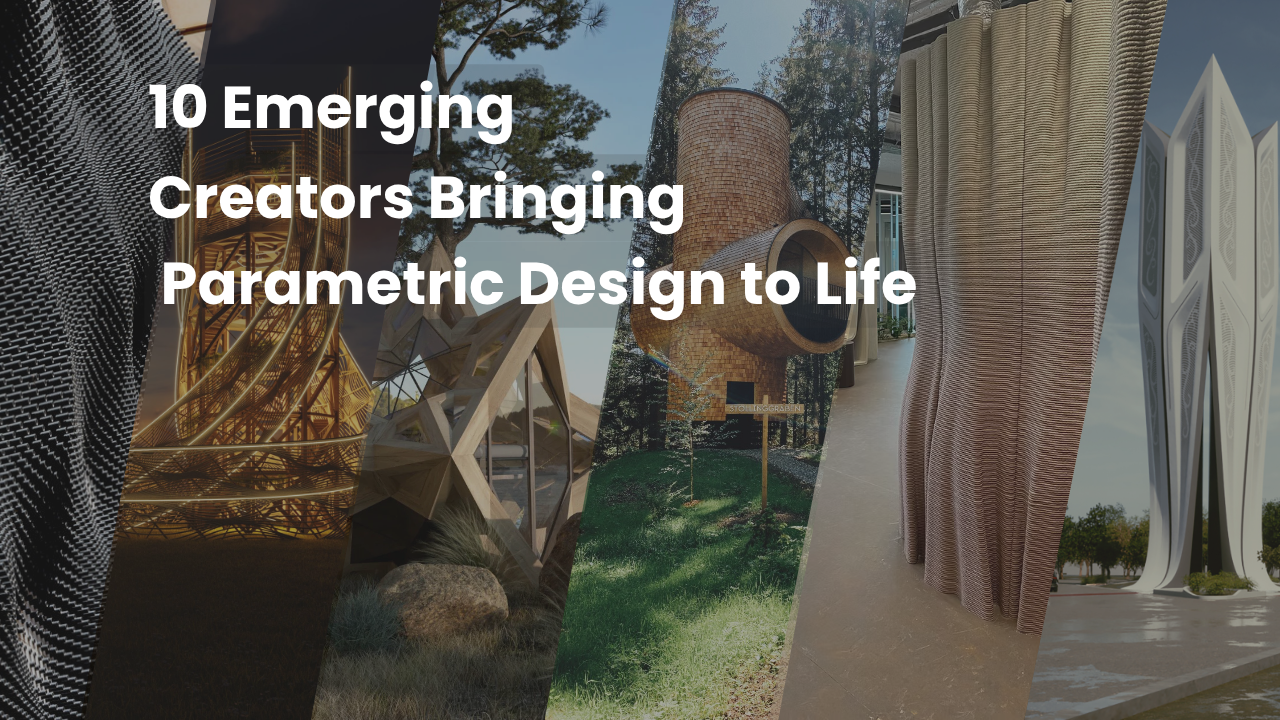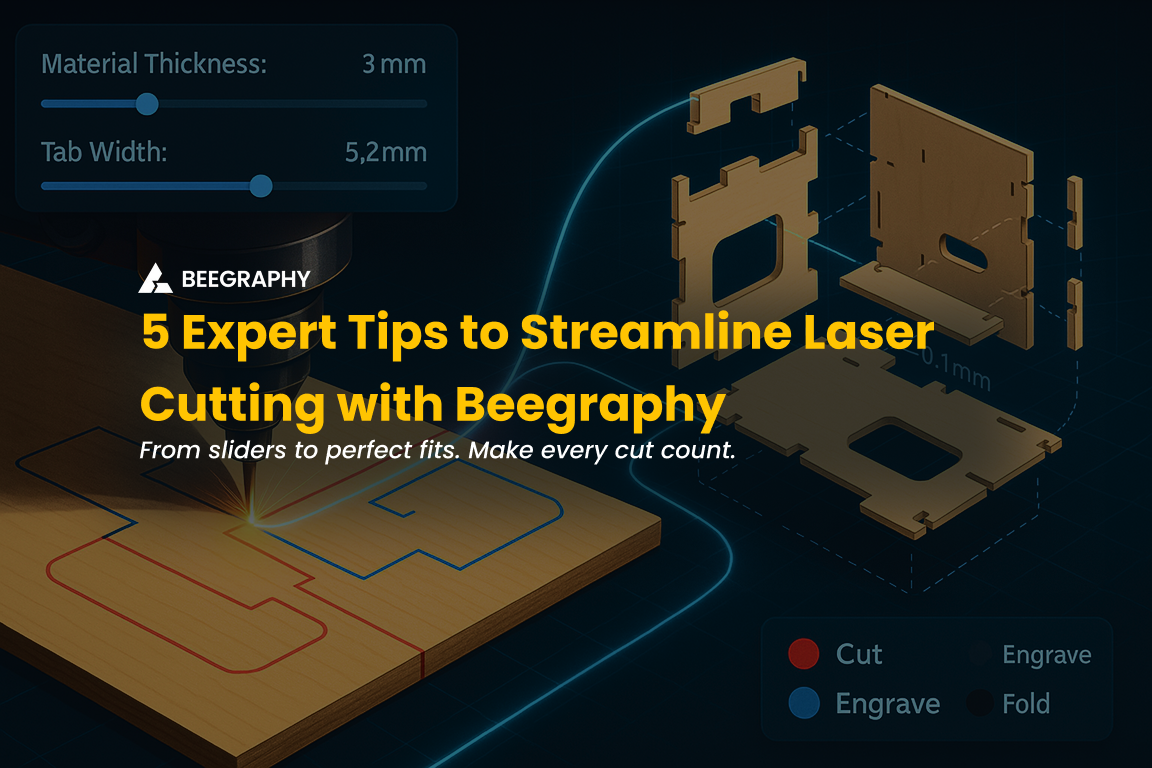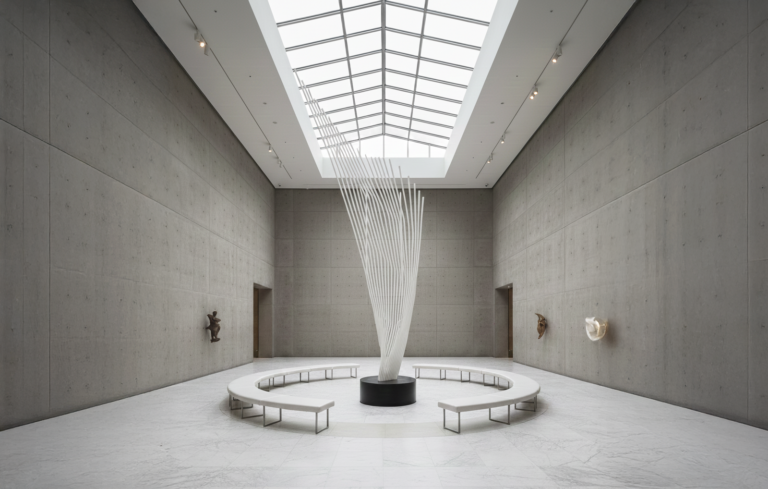Table of Contents
Have you noticed how design is changing right before our eyes? It’s no longer just about sketches on paper or static blueprints. There’s a new language in play, parametric design, and it’s opening doors to possibilities we never imagined. Whether it’s architecture, jewellery, or industrial design, more and more creators are using algorithms and digital tools to bring complex, flexible, and breathtaking ideas to life.
In this post, I want to introduce you to ten rising innovators who are making waves with parametric design. They come from different corners of the design world but share a common trait: they’re all pushing boundaries by blending technology with creativity. Their work doesn’t just look different, it changes how we think about form, function, and sustainability. Let’s dive in and see who these game changers are and how they’re shaping the future of design.
Estudio Victor Alemán (EVA)

Victor Alemán’s acclaimed furniture designs merge digital parametric design with traditional craftsmanship.
Victor Alemán, based in Mexico City, founded Estudio Victor Alemán (EVA) in 2010, bringing over 18 years of expertise in industrial design, product development, and design management. His studio focuses on pioneering designs that merge digital parametric systems with traditional analogue craftsmanship.
Victor’s philosophy, termed “Digital Craftsmanship,” blends parametric design methods with hands-on manufacturing processes. This approach creates unique, customizable objects that preserve the tactile, handcrafted quality while benefiting from the precision and flexibility of computational design.
Victor’s acclaimed works include the Loopita Lounge Chair (2015), recognized with a Special Mention at the Architizer A+ Awards for its innovative continuous loop form, the sculptural Miss Eames Sofa Lounge (2016), honored at NYCxDESIGN’s Wanted Design, and Replica by LEFT (2018), a modular, adaptable seating system also celebrated at NYCxDESIGN. Widely featured on platforms like Behance and social media, his designs are known for merging artistic expression with functional utility and for pushing the boundaries of form and material innovation.
Victor Alemán’s distinctiveness lies in his mastery of integrating advanced parametric design with artisanal manufacturing, making his work a benchmark for contemporary, digitally crafted yet handcrafted design.
Matra Studio

Matra Studio’s founders with examples of their parametric, environmentally responsive architecture that blends digital innovation with local culture and sustainability.
Matra Studio, founded in 2017 in Central Jakarta by Rizki Tridamayanti Siregar (CEO) and Yasser Hafizs (Design Director), is a forward-thinking architectural practice known for integrating parametric design with local culture and environmental sustainability. The studio employs a data-driven, algorithmic design approach that combines advanced digital tools with passive design principles to create buildings that are not only visually striking but also energy-efficient and environmentally responsive.
While specific projects are not extensively detailed publicly, Matra Studio’s portfolio reflects a strong commitment to adaptive geometries and context-sensitive architecture, emphasising sustainability and cultural relevance in each design. Their work addresses the unique environmental and social conditions of their locale, embodying resilience and adaptability.
The firm has earned recognition for its innovative use of parametric design, with co-founder Yasser Hafiz contributing to thought leadership through talks on resilience and adaptive architecture. Matra Studio’s philosophy and projects have been featured in architectural platforms and exhibitions, highlighting their blend of technology and cultural sensitivity.
Matra Studio’s distinct strength lies in marrying cutting-edge parametric techniques with a deep respect for local context and sustainability, positioning them as pioneers in responsive, environmentally conscious architecture.
Terrafom Design

Terraform Design’s parametric furniture and fixtures blend natural forms with digital craftsmanship.
Terraform Design, based in Sarasota, Florida, is led by founder Nick O’Donnell, an entrepreneur recognised for blending parametric design with natural aesthetics since at least 2014. The studio specialises in creating furniture and architectural fixtures driven by algorithmic, code-based modelling that mimics organic growth patterns and geometric formulas found in nature.
Their design philosophy focuses on producing highly geometric yet fluid forms that “grow” through mathematical processes, resulting in pieces that are both functional and sculptural. This unique fusion of technology and artistry is evident in projects like the Kol Ami Bench and custom wall facades for educational, corporate, and residential spaces, including the San Jose Overfelt School Wall, San Francisco Starlight Lounge, and Aura Boca Apartment Lobby Bench.
Terraform Design’s innovative craftsmanship has earned them prestigious awards such as the 2023 CASF Craftsmanship Award and founder Nick’s recognition in Florida Gulf Coast’s ’40 under 40′ and Governor’s Young Entrepreneur awards.
Their work has been featured in major media outlets, including USA Today and The Wall Street Journal, and Nick frequently shares insights on parametric design through talks and lectures.
Terraform Design’s standout strength lies in its ability to algorithmically create pieces that resonate with natural forms while delivering practical, aesthetically compelling designs.
John Brevard

Multidisciplinary designer John Brevard blends parametric design and architecture with sacred geometry, crafting visionary works across space, fashion, and furniture.
John Brevard is a multidisciplinary American designer, architect, and artist with studios in Miami, New York City, and Ibiza. Founded in 2007, his work is deeply influenced by a near-death experience at age 14, which sparked his exploration of consciousness, sacred geometry, and the interconnectedness of nature and humanity. Brevard’s design philosophy centres on sacred geometry, fractals, and biomimicry, using parametric and algorithmic modelling to create forms that echo the universe’s intrinsic patterns.
Notable projects include the Thoscene Platform, a customisation tool that generates personalised jewellery using astrological algorithms; the Helix Bungalow, a sustainable prefabricated home with a spiral layout maximising light and space; and the Parametric Chair, a handcrafted teakwood piece showcasing fluid, organic curves.
Brevard’s innovation has been recognised by the Council of Fashion Designers of America (CFDA) and Miami New Times, which named his Wynwood showroom “Best of Miami.” His work has been exhibited at galleries like Nilufar Milano and Art Basel, and featured in prestigious publications such as Architectural Digest, Vogue, and Forbes. He also collaborates on exclusive events, including partnerships with Marchesa in the Middle East.
John Brevard’s unique strength lies in merging parametric design with metaphysical and spiritual concepts, creating transformative art and architecture that connect deeply with viewers.
Mamou-Mani Architects

Arthur Mamou-Mani pioneers parametric design in architecture through eco-friendly, digitally fabricated structures that redefine sustainability and form.
Mamou-Mani Architects, founded in 2011 by Arthur Mamou-Mani in London, is a pioneering design studio known for its sustainable, parametric architecture combined with digital fabrication. The practice embraces cutting-edge technologies such as 3D printing and laser cutting through their digital fabrication lab, Fab.Pub, enabling innovative, hands-on experimentation with eco-friendly materials.
Their design philosophy centers on creating architecture that is not only visually striking but also environmentally responsible, often exploring circular economy principles and biodegradable materials. Notable projects include Temple Galaxia (2018), a spiraling timber temple at Burning Man symbolizing unity and the cosmos; Conifera (2019), a 3D-printed bioplastic installation exhibited at Milan Design Week; and Altostrata (2023), a compostable sugar-based pavilion shown at Dubai Design Week. Their latest work, Harmonic Tides (2025), is a 3D-printed installation inspired by hydrodynamic water forms that won the Shaping Water Competition.
Mamou-Mani Architects has received prestigious accolades such as the Prix Pierre Cardin (2020), Architecture MasterPrize (2016), and recognition from RIBA as Rising Stars. Founder Arthur Mamou-Mani is also a sought-after speaker at international forums including TEDx events. Their work has been featured in leading publications like The New York Times and Forbes.
The firm’s USP lies in its seamless fusion of parametric design, sustainable materials, and digital fabrication, driving innovative architecture with minimal environmental impact.
Studio Precht

Chris Precht champions sustainable architecture through nature-driven parametric design, blending modular systems with organic aesthetics.
Studio Precht, based in the Austrian Alps near Salzburg, was founded in 2016 by architects Chris Precht and Fei Tang Precht. Known for fusing architecture with nature, the studio envisions a more sustainable future by integrating ecological principles into every aspect of their work. Their designs reflect a deep commitment to environmental responsibility, often incorporating modular systems, vertical farming, and natural materials like timber and bamboo.
Studio Precht’s architectural language is bold yet organic, seen in conceptual projects like The Farmhouse, a modular home merging vertical farming with urban living, and Toronto Tree Tower, a timber high-rise designed to boost biodiversity in dense cities. Their playful Bert treehouses, created in collaboration with Baumbau, celebrate childlike wonder and forest immersion, while San Shan Bridge in Beijing showcases sculptural fluidity inspired by the Olympic rings. Projects like Tel Aviv Arcades reflect regional heritage through modular, arch-based facades.
Recognised as Emerging Firm of the Year (2016) by Architizer A+Awards, Studio Precht has been consistently ranked on the Dezeen Hotlist and featured in major publications like ArchDaily and Architect Magazine. Through global lectures and exhibitions, Chris Precht continues to advocate for a new architectural ethic, one that harmonises urban life with the rhythms of the natural world.
Lilian van Daal

Dutch designer Lilian van Daal merges parametric design with biomimicry, crafting sustainable architectural solutions inspired by nature’s intelligence.
Lilian van Daal, a visionary Dutch designer, is redefining sustainable design through the lens of biomimicry and biophilic innovation. Since founding her practice in 2014, she has been at the forefront of integrating nature’s intelligence with advanced digital technologies. With a background in Industrial Product Design and conceptual studies at the Royal College of Art in The Hague, van Daal explores how organic systems can inspire efficient, elegant, and eco-conscious product design.
Her work transforms scientific insight into tangible forms. In Biomimicry 3D Printed Soft Seat (2014), she used 3D printing to create a seamless, cushion-like chair whose comfort emerges naturally from the internal structure, with no additional materials needed. Dynamorphosis (2016) explored biological processes within the human body to inform futuristic design aesthetics and functions. In Shapes of Sweden (2017), she designed a Volvo seat inspired by pinewoods, blending nature, mobility, and sustainability. Her recent piece, Rhodotus (2023) is a poetic light sculpture merging AI, 3D printing, and mushroom anatomy.
Winner of the Bio Art and Design Award and the Volvo Design Challenge, van Daal’s work has been exhibited globally and collected by institutions like the Centre Pompidou. Her unique approach, reimagining nature through technology, positions her as a pioneering voice in sustainable product innovation.
Synthesis DNA

Alvin Huang of SDA pioneers parametric design in architecture, merging technology, fabrication, and cultural context to shape dynamic, high-performance spaces.
Synthesis Design + Architecture (SDA), led by Alvin Huang, is a Los Angeles-based design practice redefining architecture at the intersection of technology, performance, and cultural expression. Founded in London in 2010 and relocated to the U.S. in 2011, SDA operates with a forward-thinking ethos that blends computational design, digital fabrication, and global narratives to produce architecture that is both cutting-edge and deeply contextual.
SDA’s mantra, form follows performance, is embodied in iconic projects like the Durotaxis Chair (2014), a 3D-printed dual-position rocking chair inspired by cellular behaviour, and the Chelsea Workspace (2011), a CNC-fabricated home office solution marrying craft and function. Their Pure Tension Pavilion for Volvo (2015) exemplifies their command over structural innovation and lightweight design.
Recognised as AIA LA’s Presidential Emerging Practice of the Year (2016) and featured in Time’s 25 Best Inventions, SDA continually pushes the boundaries of architectural possibility. Beyond form-making, they champion diversity and inclusion, and their work reflects a global design consciousness. Through lectures, exhibitions, and collaborations, Alvin Huang and SDA advocate for a design future where digital intelligence and human experience converge to create responsive, responsible, and resonant architecture.
Studio Emergence

Studio Emergence pioneers parametric design in India, blending digital innovation with cultural context to craft expressive, sustainable architecture.
Studio Emergence, founded by Seeja Sudhakaran and Khushbu Davda in Mumbai, is a pioneering architectural studio at the forefront of parametric and computational design in India. Since 2015, the studio has carved a distinct niche by merging digital design technologies with contextual sensitivity, producing work that reflects a deep interplay between geometry, materiality, and culture.
Their design philosophy bridges art, architecture, and science, delivering projects that are both aesthetically innovative and functionally sustainable. Notable works like the Hybrid Planetarium in Visakhapatnam, a winning entry inspired by black hole morphology, and the Hybrid Seat Installation, echoing the rhythms of ocean waves, exemplify the studio’s commitment to creating immersive, community-focused spaces. International ventures like Isengard Office in Dubai and local hospitality landmarks like Vortex West demonstrate their versatility and global design relevance.
Recognised with awards such as the Urban Design & Architecture Design Awards and the iDAC Infinity Award, Studio Emergence champions design education and public engagement through workshops and media presence. Their unique approach lies in contextualising advanced design algorithms within cultural and environmental frameworks, positioning them as leaders in India’s computational design movement. With each project, they reimagine architecture as an adaptive, expressive, and sustainable force.
Nudes Architecture

NUDES Architecture, led by Nuru Karim, redefines parametric design in India through sustainable, tech-driven, and culturally rooted architecture.
NUDES Architecture, founded in 2010 by Nuru Karim in Mumbai, India, is a leading design studio operating at the crossroads of art, architecture, and computational design. Karim, a graduate of the Architectural Association in London with over 25 years of experience, including tenure at Zaha Hadid Architects, leads the firm’s vision of sustainable, innovative architecture deeply connected to its environment.
The studio leverages digital making and computational tools to create designs that respond to social, cultural, and ecological contexts. Their projects showcase this blend of technology and sustainability, such as The Bad Café (2017), renowned for its distinctive brick façade and winner of the Golden A’ Design Award. Another landmark is the Ismaili Jamatkhana and Community Centre (2022), which reinterprets traditional Islamic architectural motifs with parametric design techniques. The visionary People’s Tower (2021), adorned with over 11,500 plants, exemplifies their commitment to integrating nature and community.
NUDES has earned accolades including the Golden A’ Design Award and a nomination for the Aga Khan Award for Architecture. Their work has been featured widely in ArchDaily, Designboom, and STIRworld. The firm actively participates in global events like the Venice Architecture Biennale and Milan Design Week. Karim’s thought leadership extends to international talks, including TEDx.
NUDES Architecture’s unique strength lies in marrying computational design with sustainable, socially conscious architecture that pushes creative and environmental boundaries.
Embrace the Future: Think Like a Parametric Designer
So, what does all this mean for you? Just like the innovators we’ve explored, design today is a conversation between creativity and computation, a dynamic dialogue that’s reshaping everything from buildings to everyday objects. These trailblazers are proof that parametric design isn’t just a tool for specialists; it’s a new mindset, a way of thinking that invites experimentation, flexibility, and sustainability.
If you’re ready to step into the future of design, why not start by thinking like these pioneers? Dive into computational design, explore its endless possibilities, and let your creativity evolve alongside technology. The future is being shaped by those willing to imagine beyond the conventional, and it could very well be you leading the next wave of transformation. So, get curious and start designing differently today.










